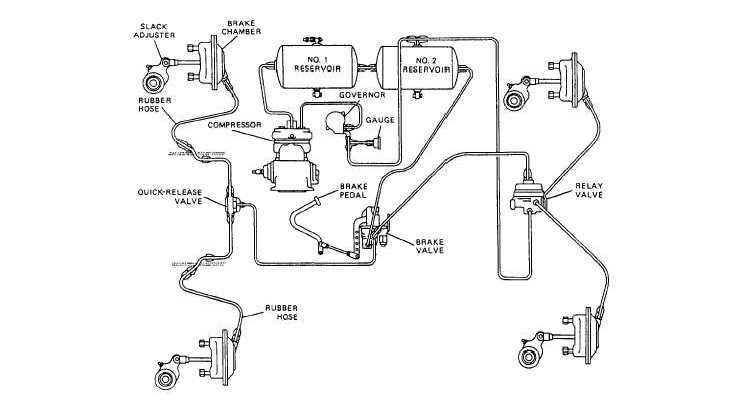Brakes Too Sensitive:
Pedal linkage binding or a defective hydroboost unit will cause this to happen.
Excessive Noise:
Excessive noise originating in the hydroboost unit is an indication of the following problems: low power steering fluid, air in the power steering fluid, a loose power steering belt, or a restriction in the hydraulic hoses.
WARNING
The interchanging of parts between hydroboost units of different makes of CESE is not recommended. Tolerances of parts and pressure differentials may be different, causing a jerry-rigged hydroboost unit to exceed the normal 1,400 psi accumulator pressure. INJURY TO PERSONNEL AND DAMAGE TO THE VEHICLE COULD BE THE RESULT. PROTECT YOURSELF. USE THE MANUFACTURER'S SPECIFICATIONS WHEN YOU WORK ON THESE UNITS.
The manufacturer recommends that this unit not be rebuilt or overhauled. If the problem is in the booster, replace the booster.
TROUBLESHOOTING AIR BRAKE SYSTEMS
The purpose of air braking systems (fig. 6-10) is to enable the operator to apply sufficient braking action to the wheels of larger and heavier trucks and construction equipment. Considerable force is available for braking since the operating pressure is as high as 110 pounds per square inch. More often, stopping distances will be much greater than those shown in figure 6-1, primarily because of the increased weight of the equipment and load. General information concerning air braking systems can be found in chapter 10 of the Construction Mechanic 3&2, NAVEDTRA 10644-G1 .
When you are troubleshooting, first make a visual inspection and check all the obvious things-open air drain cocks, off-track compressor belt, broken air lines, and so forth. Next, perform an air buildup test and an air leakage test.

Figure 6-10. - typical air brake system.
Continue Reading